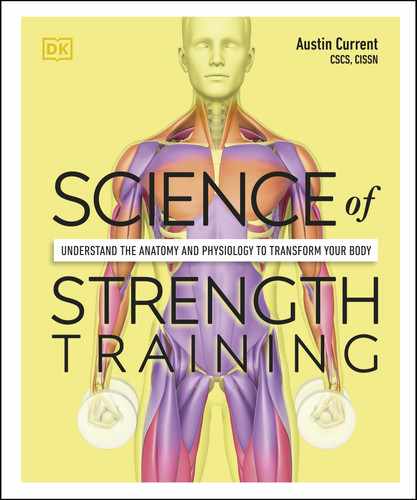Strength training and your brain
The physical adaptations made early in response to strength training are predominantly in the nervous system. Experts believe that nervous-system-based responses account for the gains made in the first two to four weeks of strength training.
The control of muscles
The nervous system comprises your brain and spinal cord and countless nerves taking messages from your brain to your body and back again. Motor nerves transmit signals about movement from the brain’s motor cortex via the spinal cord, whereas sensory nerves relay information from the muscles to the brain and spinal cord.
Neural adaptations
Adaptation is a dynamic process whereby the body adjusts to a particular environment. Strength training helps develop motor pathways that enhance brain–body coordination. These “neural adaptations” describe how the brain recruits muscles to contract to produce a particular movement. Practice trains the brain to activate the right muscles for that motion; with time, the movement becomes more automatic. Adaptations in both nervous and muscular systems (which kick in later) result in improved technique, coordination, and efficiency of movement over time.
smoother moves
Your brain sends a signal to activate the agonist of an action. Initially, it also signals to the antagonist at the same time (coactivation). With repetition, the amount of coactivation diminishes and your technique improves.

n Double-tap image to read the labels
Brain
The motor cortex sends instructions to muscles to move; the sensory cortex receives information from the muscles
Spinal cord
A relay for messages coming from and going to the brain
Agonist muscles
The gastrocnemius and soleus drive the raise
Antagonist muscle
The tibialis anterior allows the raise
Strength training’s brain gains
Regular strength training has been shown to increase levels of neurotrophins—a family of growth and survival factors that regulate the development and the maintenance of nerve cells or neurons. Two neurotrophins in particular—brain-derived neurotrophic factor (BDNF) and insulinlike growth factor 1 (IGF-1)—have both been shown to have positive effects on neurogenesis and neuroplasticity.
Neurogenesis
The creation of new neurons—neurogenesis—is just one of the positive ways that strength training and exercise impacts the brain. Scientists used to believe that you were born with a certain number of neurons—around 86 billion—and that you couldn’t grow new ones. Research has since revealed that neurogenesis can happen and it does so in key areas of the brain, such as in the hippocampus, which is important in memory.
new brain cells
In this microscopic image of the brain’s hippocampus, neuron cell bodies are colored pink. Strength training promotes neurogenesis, the making of new neurons.

Neuroplasticity
Pathways within the brain become more permanent the more you use them; repetition strengthens and continues to build a neural network. This ability to form new connections and pathways—known as neuroplasticity—changes how brain circuits are wired. Learning a new skill, such as that needed in strength training, improves how existing neurons work and offers positive benefits across brain function.
BUILDING CONNECTIONS
Neurons form new connections in response to a stimulus. Repetition of the stimulus reinforces how the brain is wired.
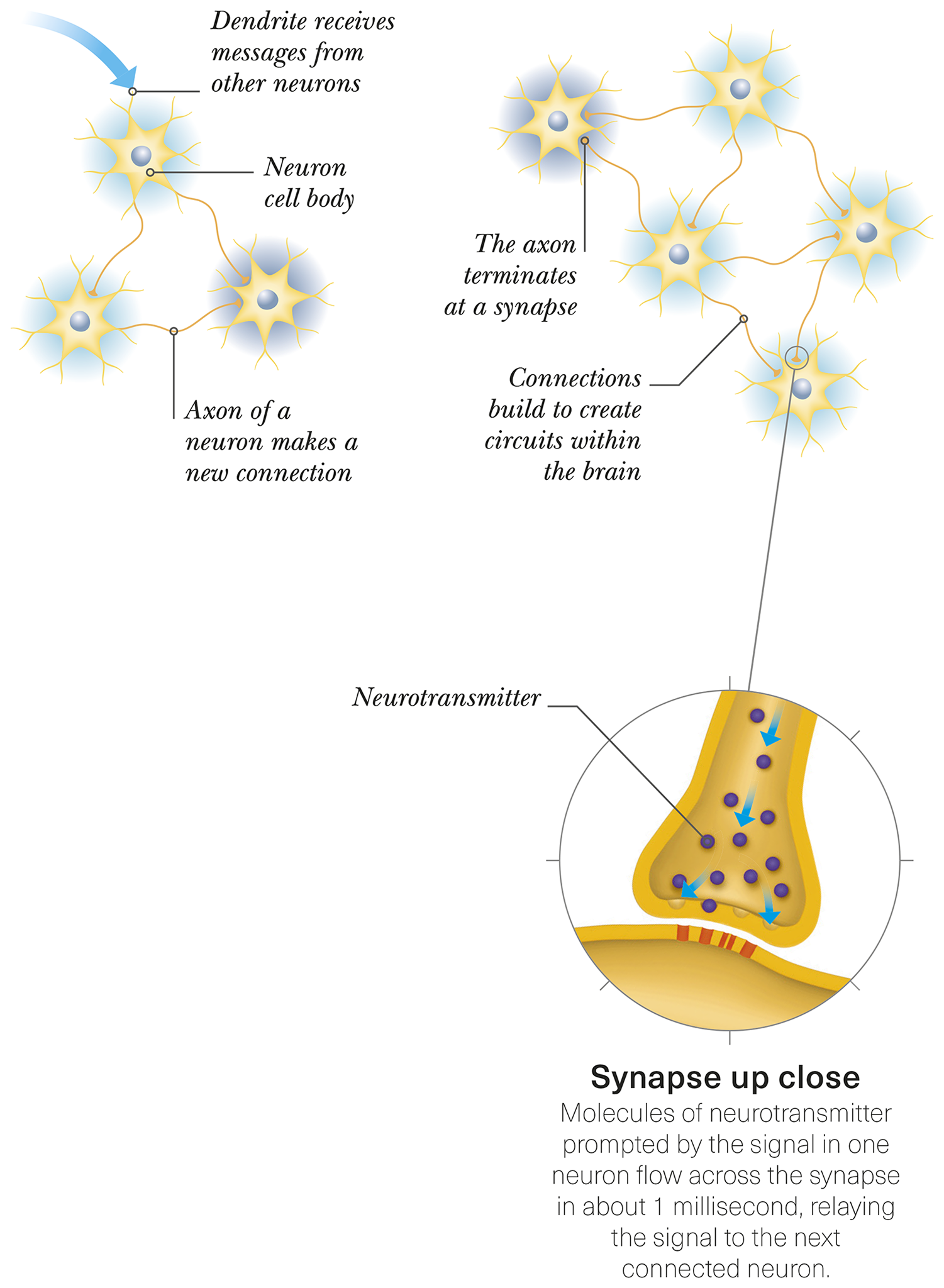
n Double-tap image to read the labels
Synapse up close
Molecules of neurotransmitter prompted by the signal in one neuron flow across the synapse in about 1 millisecond, relaying the signal to the next connected neuron.
Neurochemistry
Where one neuron meets another, there is the tiniest gap, also known as a synapse. To transmit the electrical signal from one neuron to the next, your brain uses a system of molecules called neurotransmitters. These chemicals diffuse across the gap and initiate the signal in the next connected neuron. Strength training exercise boosts levels of certain neurotransmitters, such as dopamine, as well as levels of endorphins, which lift mood and quell anxiety.
![]() Mind–muscle connection
Mind–muscle connection
When strength training, it’s good to work without distractions so that you can pay attention to each and every exercise. You can also boost your workout gains by developing a mind–muscle connection. It’s the act of consciously and deliberately thinking about moving the target muscle, because research shows that this can really boost muscle strength. Practicing such a conscious approach leads to the recruitment of more muscle fibers in a movement, which ultimately means better-quality muscle contractions and a more successful workout.
Brain-based benefits
In addition to the physical health benefits, research is uncovering a host of positive impacts on mental health and the brain from doing regular strength training—reducing stress, boosting productivity, focusing the mind, and enhancing memory are just a few of them.
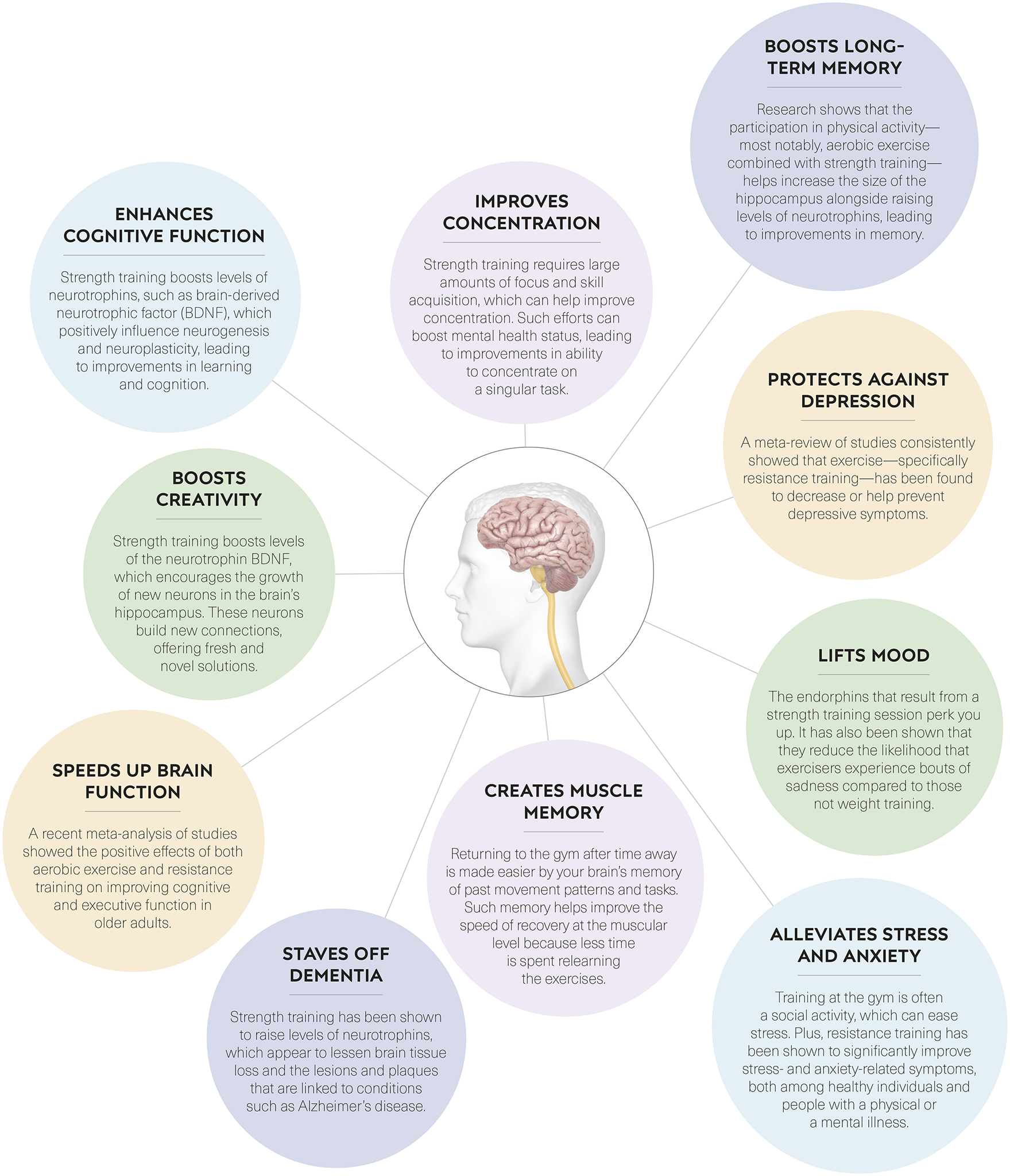
n Double-tap image to read the labels
enhances cognitive function
Strength training boosts levels of neurotrophins, such as brain-derived neurotrophic factor (BDNF), which positively influence neurogenesis and neuroplasticity, leading to improvements in learning and cognition.
Improves concentration
Strength training requires large amounts of focus and skill acquisition, which can help improve concentration. Such efforts can boost mental health status, leading to improvements in ability to concentrate on a singular task.
Boosts long-term memory
Research shows that the participation in physical activity— most notably, aerobic exercise combined with strength training— helps increase the size of the hippocampus alongside raising levels of neurotrophins, leading to improvements in memory.
Boosts creativity
Strength training boosts levels of the neurotrophin BDNF, which encourages the growth of new neurons in the brain’s hippocampus. These neurons build new connections, offering fresh and novel solutions.
Protects against depression
A meta-review of studies consistently showed that exercise—specifically resistance training—has been found to decrease or help prevent depressive symptoms.
Speeds up brain function
A recent meta-analysis of studies showed the positive effects of both aerobic exercise and resistance training on improving cognitive and executive function in older adults.
Lifts mood
The endorphins that result from a strength training session perk you up. It has also been shown that they reduce the likelihood that exercisers experience bouts of sadness compared to those not weight training.
Staves off dementia
Strength training has been shown to raise levels of neurotrophins, which appear to lessen brain tissue loss and the lesions and plaques that are linked to conditions such as Alzheimer’s disease.
creates muscle memory
Returning to the gym after time away is made easier by your brain’s memory of past movement patterns and tasks. Such memory helps improve the speed of recovery at the muscular level because less time is spent relearning the exercises.
Alleviates stress and anxiety
Training at the gym is often a social activity, which can ease stress. Plus, resistance training has been shown to significantly improve stress- and anxiety-related symptoms, both among healthy individuals and people with a physical or a mental illness.
psychological wins
Use psychological techniques to discover what drives you to do strength training and to establish sustainable habits based around achieving goals in the long term. Think of goals as a way of setting a direction, but your daily habits are the system for making progress.
Find your motivation
Your basic psychological needs all feed into your motivation toward achieving a goal. But you also need to understand why you want to reach that goal. Motivation can be intrinsic (driven by basic needs; things that are satisfying; things that you’re good at) and extrinsic (focused on appeasing others). While you work toward your goals, it has been shown that extrinsic motivations fade, while intrinsic motivations take over.

n Double-tap image to read the labels
Establish sustainable habits
Creating long-lasting routines and habits ensures you set yourself up for success and perform tasks without having to think much about them. The more you repeat the cycle, the more you will strengthen the bond between the cue and the action. At first, this process can be difficult, but the more you execute this routine, the more automatic it will become. If you struggle to get started, keep in mind that it’s important to begin with small steps and to find something you enjoy doing.
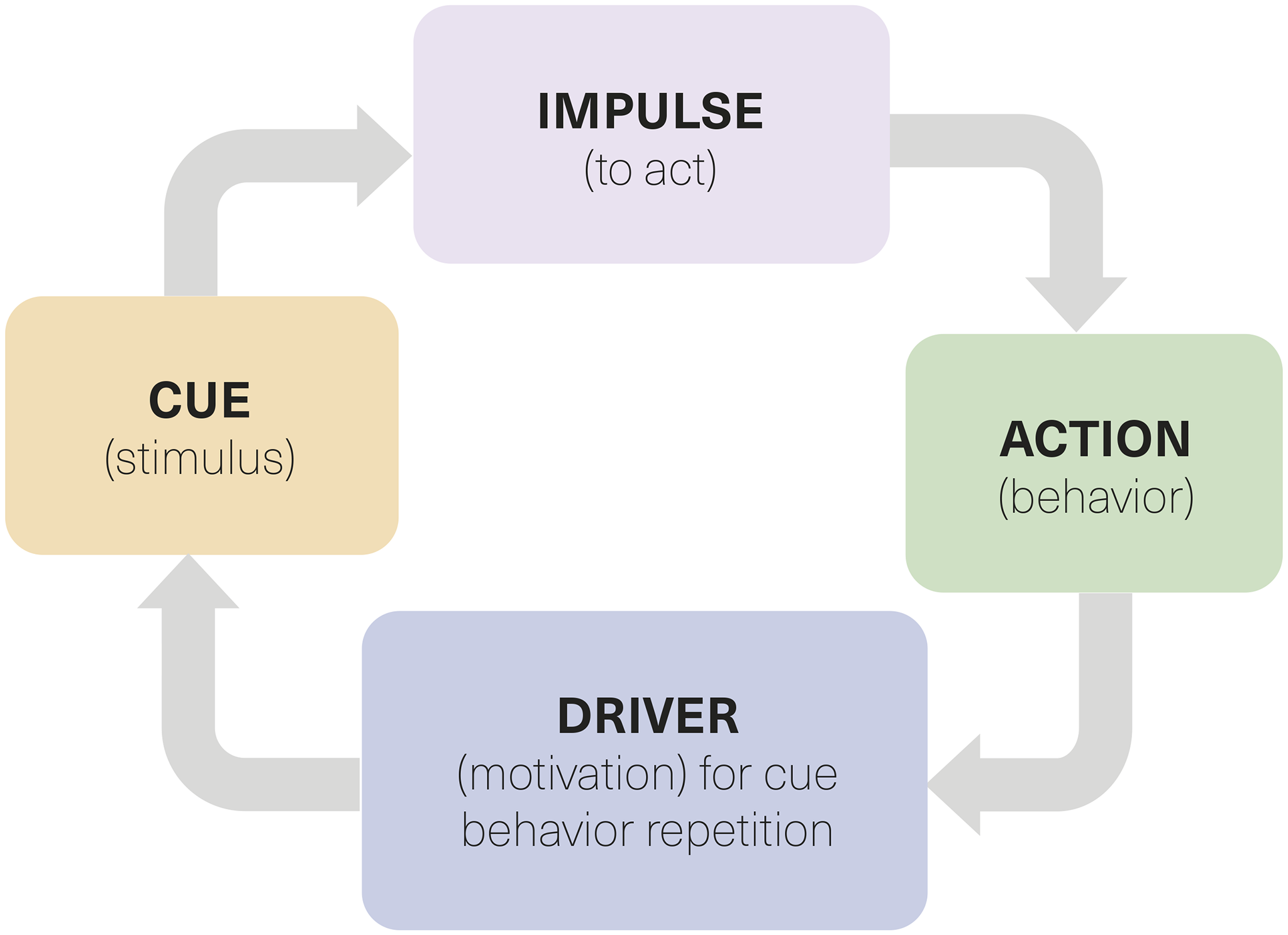
n Double-tap image to read the labels
Set reliable goals
Once you’ve identified your motivations for creating change, it’s important to understand how to set goals you can attain. Setting goals is known to be a positive contributor to achieving what you have set out to accomplish while lowering the potential to be overwhelmed or discouraged. When setting a goal, you need to be sure it is SMART.
SMART goals work
The acronym SMART is useful to help you remember the characteristics of goal setting. For maximum success, a goal needs to be Specific (identify what you would like to accomplish); Measurable (set a timeline and what you will track); Achievable (start slow and increase the intensity or commitment over time); Realistic (consider the impact on your daily life); and Timely (start by setting an initial time frame for the goal).
the right balance
To hit the Goldilocks zone (not too hard, not too easy—just right), it’s crucial to find the right level of challenge.
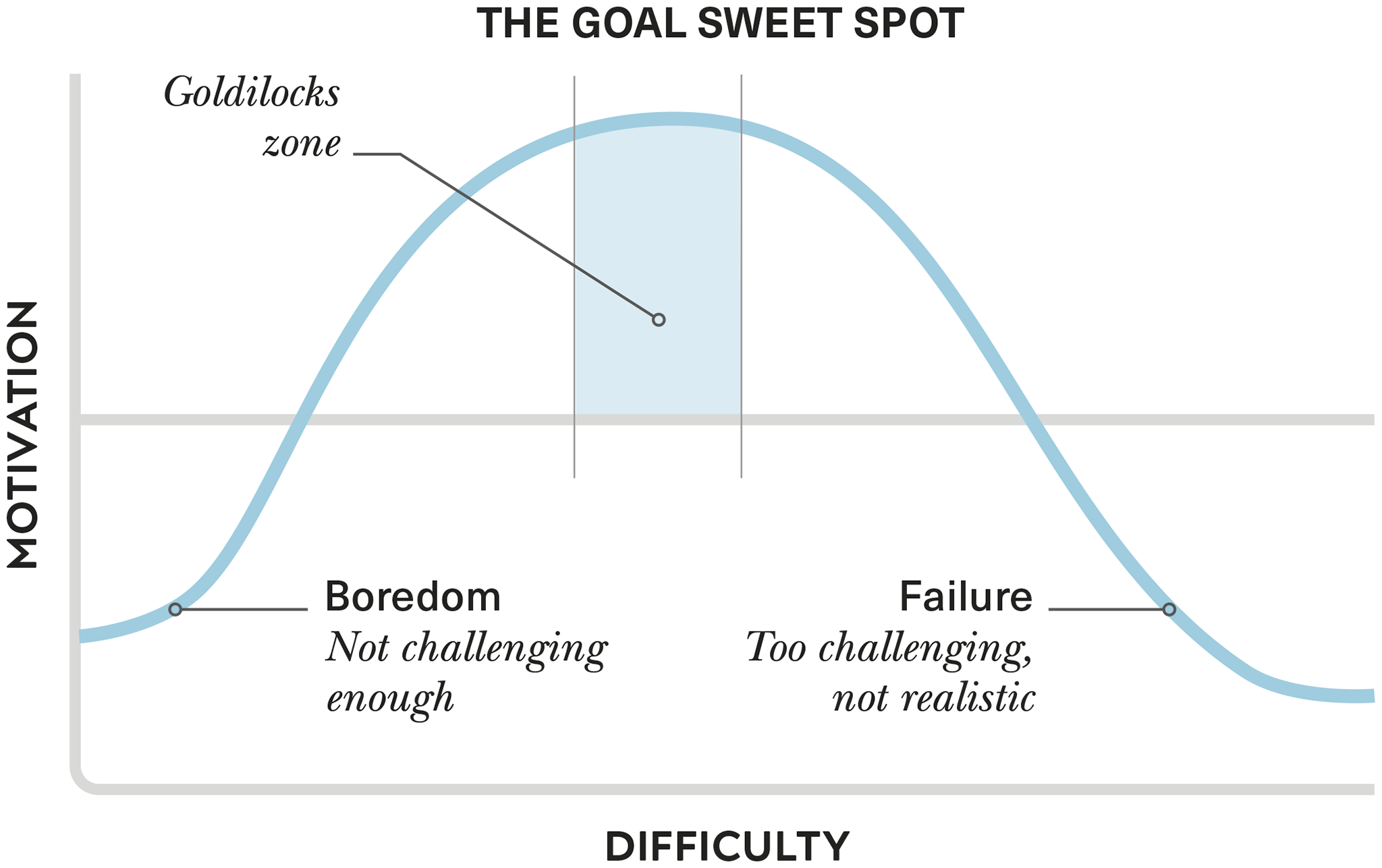
n Double-tap image to read the labels
